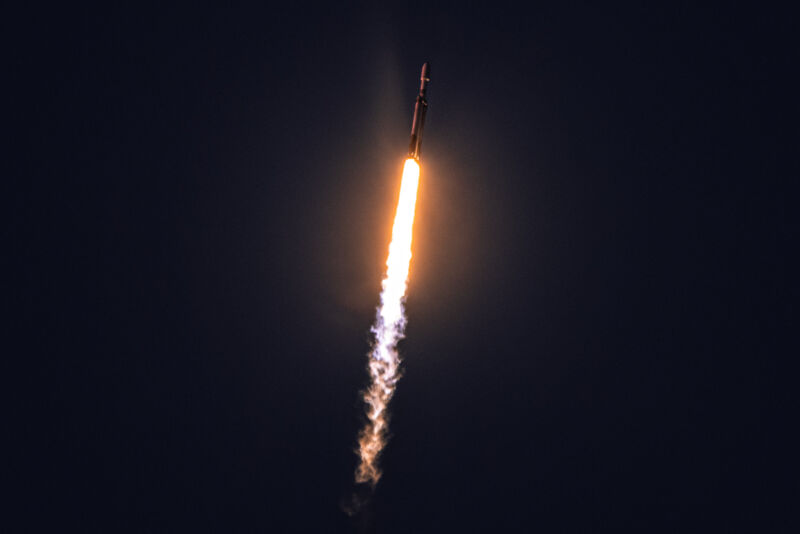
The Falcon Heavy rocket made its fifth launch in five years on Sunday evening from Florida. However, this was the first launch of the triple-core booster in twilight, and this rare evening light provided some spectacular new insights into the liftoff and return of the rocket.
This post-sunset lighting can be seen in the introductory image above, which showcases reddish hues bouncing off the white cores and upper stage. That colour comes from the rocket gaining enough altitude to be in line of sight with the Sun.
Now the second-most powerful rocket in the world after NASA's Space Launch System, the Falcon Heavy always puts on a great show, with its 27 Merlin engines firing at once. It holds the record for the rocket with the most first-stage engines to reach orbit—at least, it will until SpaceX's Starship rocket flies later this year.
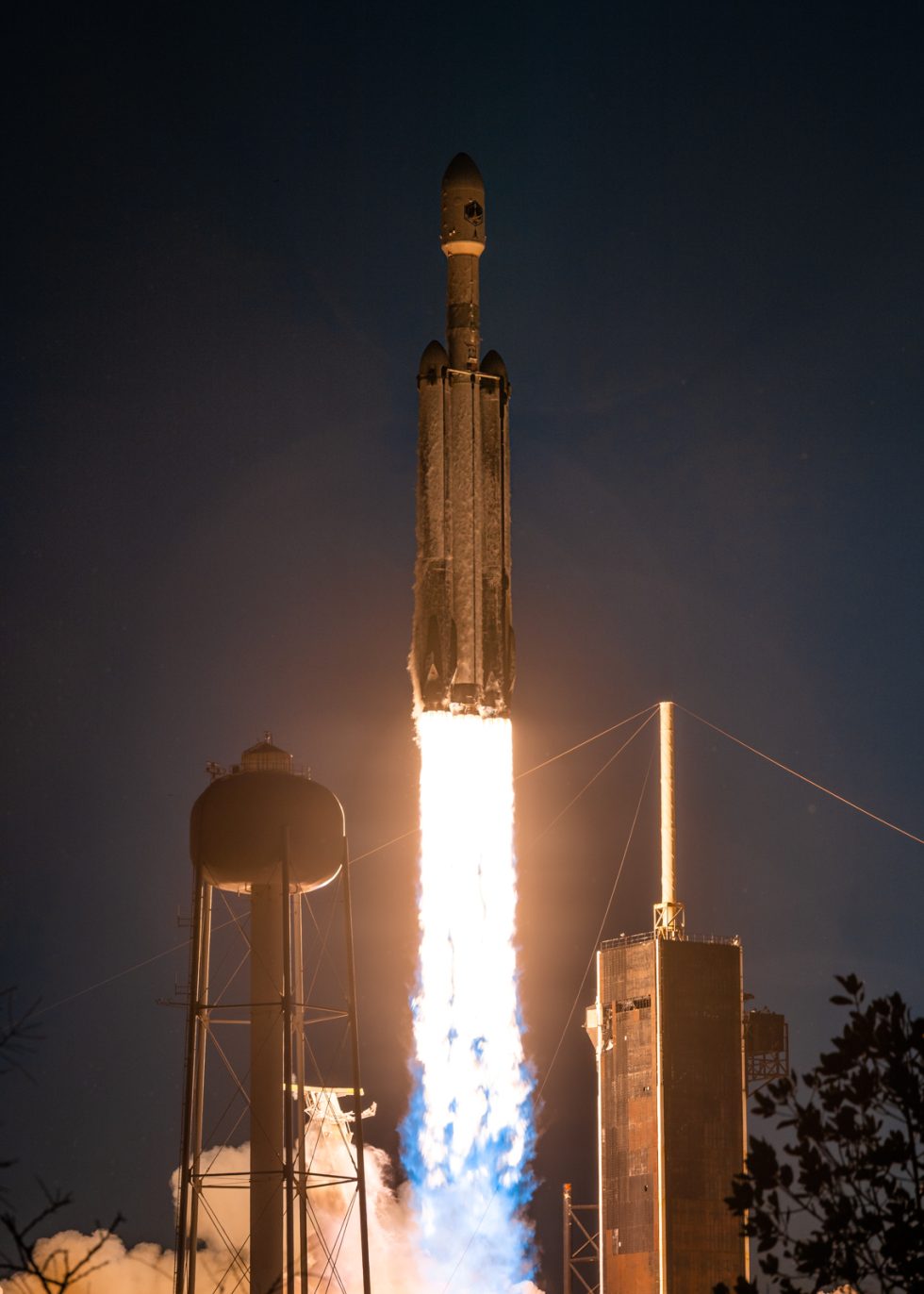
Sunday's launch was named USSF-67 and carried two payloads into geostationary orbit for the US Space Force. This was the second Falcon Heavy launch for the Space Force, with another scheduled for later this spring.
This engine shot showcases the three separate cores of the rocket, each a modified version of SpaceX's Falcon 9 rocket, with its own individual plume.
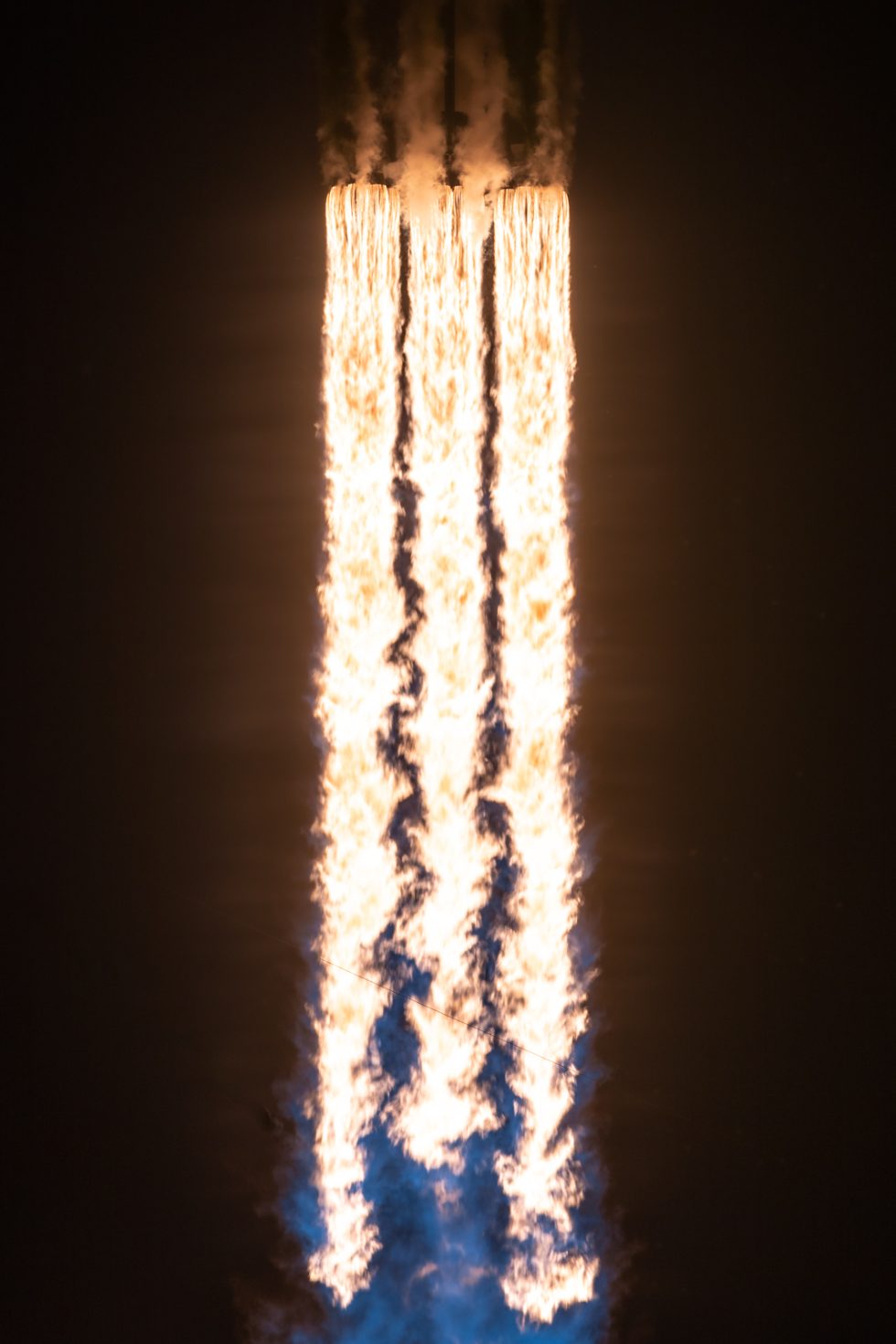
The rocket is seen here climbing into the sky before booster separation, which happens about 2 minutes and 30 seconds into the launch. After this point, the side-mounted boosters will separate from the center core of the rocket.
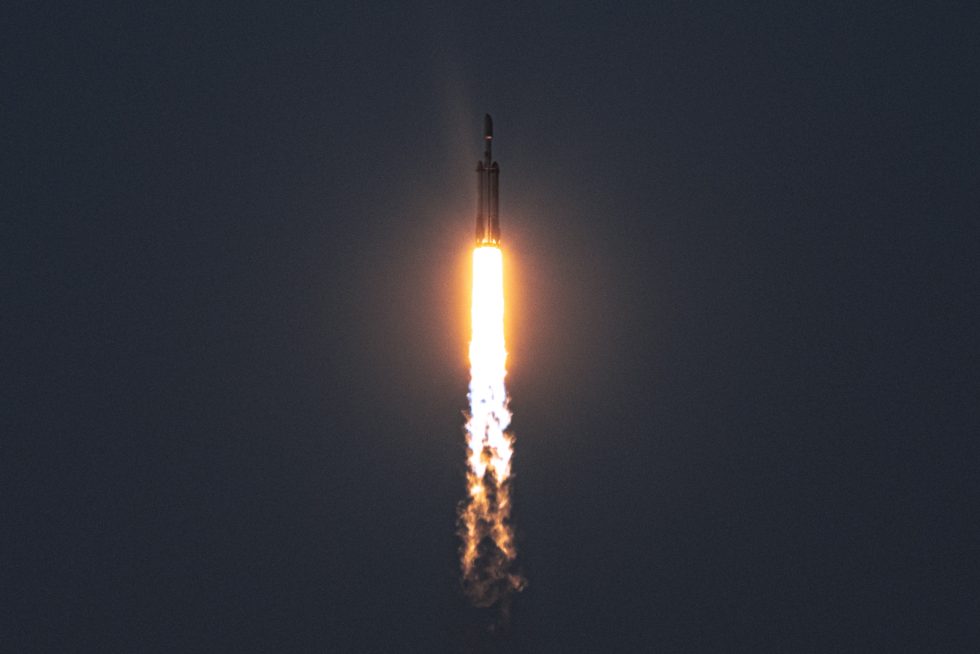
The center core then burns for an additional 30 seconds before its kerosene and liquid oxygen propellant are expended. In the meantime, the side-mounted boosters must arrest their forward motion and reorient themselves for a return to landing zones a few kilometers from the launch site.


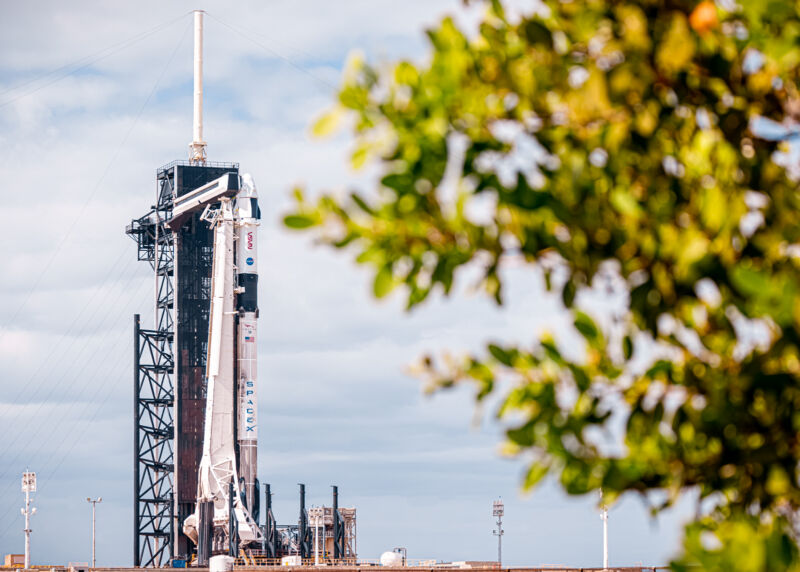
3175x175(CURRENT).thumb.jpg.b05acc060982b36f5891ba728e6d953c.jpg)

Recommended Comments
There are no comments to display.
Join the conversation
You can post now and register later. If you have an account, sign in now to post with your account.
Note: Your post will require moderator approval before it will be visible.